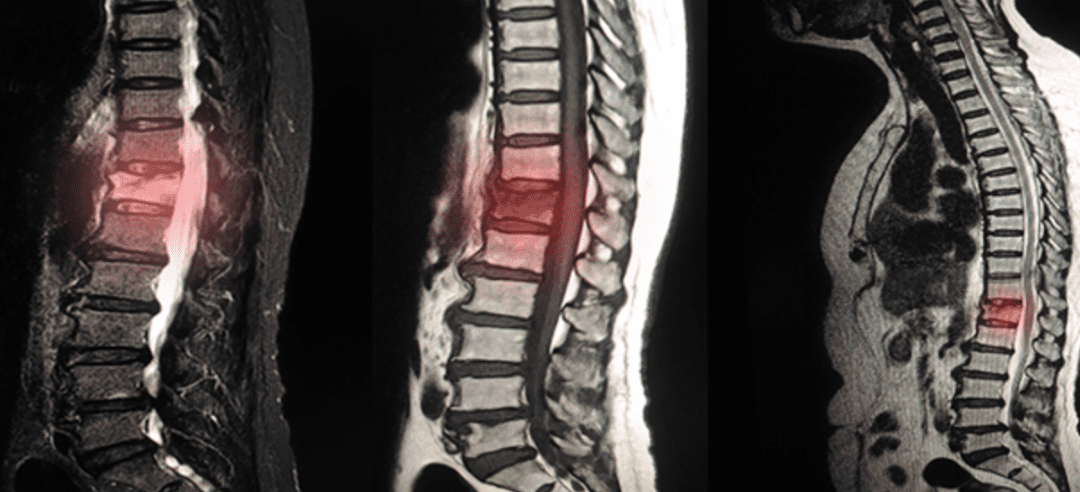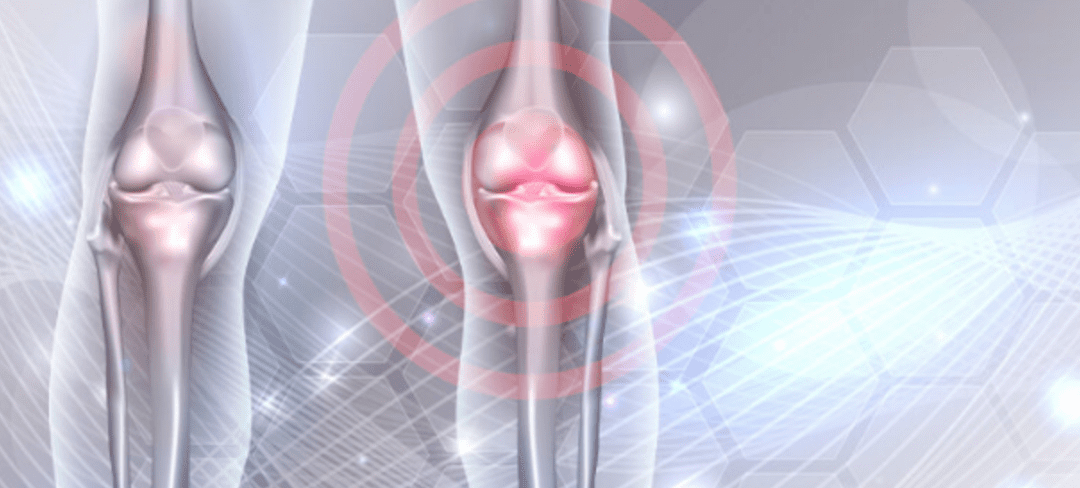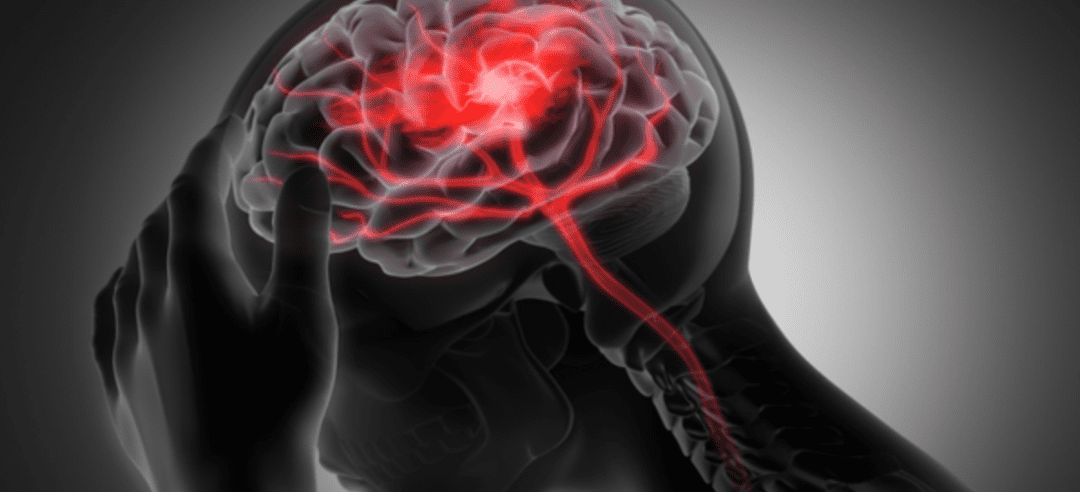
by admin | Sep 20, 2023 | Athletic Injury, Osteoarthritis, Pain Management
Currently, 1 in every 4 adults suffer from chronic knee pain; this represents a 65% increase over the last 20 years. While knee pain can be caused by several causes, including meniscus tears, tendinosis, sprains, rheumatoid arthritis, and lupus, osteoarthritis (OA) remains the most common contributor to this condition.
In this study, Lee and Padgett evaluate the use of the peptides BPC157 and thymosin-beta-4 (TB4) for the treatment of knee pain. Specifically, as part of this study, 17 patients received peptide therapy consisting of BPC157 or a combination of BPC157 and TB4 injections for their knee pain.
It is estimated that the human body has nearly 300,000 peptides. These peptides consist of chains of amino acids that range from 2 to 100 amino acids in length. One specific peptide, BPC157, when isolated, has demonstrated restorative properties that have helped in the repair of tendons, ligaments, muscles, nerves, and bone fractures. BPC157 has also been found to promote recovery from traumatic brain injury (TBI), reduce blood clots, and protect the liver.
Because of its reported acceleration of recovery from ruptured tendons, BPC157 has also become a favored therapeutic option by athletes looking to speed up the healing of their injuries. Prior to this study, no study using BPC157 in humans has been published, nor has this peptide received US Food and Drug Administration (FDA) approval in the United States.
TB4 is FDA-approved and a naturally occurring peptide that originates in the thymus gland. TB4 possesses a range of healing and regenerative properties, including accelerating recovery from skin wounds, TBI, stroke, and multiple sclerosis. TB4 has also been shown to reduce inflammatory markers and pain.
The patients involved in this study either received only an intra-articular injection of BPC157 or a combination of both BPC157 and TB4 injections.
As a follow-up, and as part of this retrospective study, the author followed up with patients between 6 months and 1 year after receiving peptide injections in their knee. Of those receiving only the intra-articular injection of BPC157, 91.6% reported significant improvements in knee pain while 75% of patients who received both peptides showed significant improvement.
While treating knee pain with BPC157 and TB4 has demonstrated potential for future therapeutic options, the author calls for additional larger studies to better understand improvements in structural changes and increased collagen production in patients with OA-induced knee pain.
Lee concludes that this retrospective study demonstrates that BPC157 has been shown to help reduce knee pain and have prolonged effects lasting over six months, a significant benefit when compared to the documented short-lived results of steroid treatment. Source: “Intra-Articular Injection of BPC 157 for Multiple Types of Knee Pain.” https://pubmed.ncbi.nlm.nih.gov/34324435/.

by Stemedix | Jun 26, 2023 | Degenerative Disc Disease
What is Degenerative Disc Disease?
Degenerative disc disease (DDD) is a condition that refers to the gradual deterioration of the discs between the vertebrae of the spine. The discs are rubbery cushions that act as shock absorbers and provide flexibility to the spine. With age and wear and tear, these discs can degenerate, leading to various symptoms and changes in the spine. In this article, we will discuss the things to avoid with degenerative disc disease.
The primary cause of degenerative disc disease is the natural aging process. As we age, the discs lose their water content and become less flexible, resulting in decreased disc height and integrity. This degeneration can also be influenced by factors such as genetics, lifestyle, and repetitive stress on the spine.
The common symptoms of degenerative disc disease include back pain, neck pain, and radiating pain or numbness that can extend into the arms or legs. The pain may worsen with activities like bending, twisting, or sitting for prolonged periods. In some cases, the degenerated disc may impinge on nearby nerves, causing additional symptoms such as weakness or tingling sensations in the affected areas.
While degenerative disc disease is a natural part of the aging process, not everyone with disc degeneration experiences symptoms. The severity of symptoms can vary widely among individuals. Diagnosis of degenerative disc disease typically involves a combination of medical history, physical examination, and imaging tests such as X-rays, MRI scans, or CT scans to assess the condition of the discs and rule out other possible causes of pain.
Who Do You See if You Think You Have Degenerative Disc Disease?
If you suspect that you have degenerative disc disease (DDD), it is advisable to consult with a healthcare professional who specializes in spine conditions. Here are some healthcare providers you can consider seeing for an evaluation and diagnosis:
Primary Care Physician (PCP): Start by scheduling an appointment with your primary care physician. They can assess your symptoms, perform a physical examination, and provide initial guidance. They may also refer you to a specialist for further evaluation if needed.
Orthopedic Surgeon: An orthopedic surgeon specializes in the musculoskeletal system, including conditions related to the spine. They can evaluate your symptoms, order appropriate diagnostic tests, and discuss treatment options ranging from conservative approaches to surgical interventions.
Neurologist: Neurologists are medical doctors who specialize in conditions related to the nervous system, including spine-related issues. They can evaluate your symptoms, perform neurological examinations, and order imaging tests to help diagnose degenerative disc disease. They can also provide recommendations for treatment and management.
Spine Specialist: A spine specialist, such as a physiatrist or a spine surgeon, focuses specifically on spine-related conditions. They have expertise in evaluating and treating degenerative disc disease. They can provide a comprehensive evaluation, recommend appropriate diagnostic tests, and develop a tailored treatment plan based on your specific needs.
Physical Therapist: Physical therapists can play a crucial role in managing degenerative disc disease. They can assess your condition, develop an exercise program to strengthen the muscles supporting your spine, and provide guidance on proper body mechanics and posture.
It is important to note that the availability of these specialists may vary depending on your location and healthcare system. In some cases, your primary care physician may provide sufficient guidance and refer you to the appropriate specialist if necessary. Seeking professional medical advice is crucial for an accurate diagnosis and to develop an effective treatment plan tailored to your individual needs.
Things to Avoid with Degenerative Disc Disease
When living with degenerative disc disease, it is important to be mindful of certain activities and habits that can worsen your symptoms or potentially harm your spine.
Firstly, heavy lifting should be avoided as it places excessive strain on your discs. If lifting is necessary, remember to use proper techniques and ask for assistance when needed.
Prolonged sitting or standing should also be minimized, as both positions can place stress on your discs. Instead, try to alternate between sitting and standing and incorporate short breaks or walks throughout the day.
High-impact activities such as running, jumping, or contact sports should be avoided, as they can further deteriorate your discs. Opt for low-impact exercises like swimming or cycling, which are gentler on your spine. Repetitive activities such as bending, twisting, or lifting should be minimized or balanced with frequent breaks to reduce strain on your discs. A sedentary lifestyle weakens the supporting muscles of your spine, so engage in regular physical activity and exercises that promote spinal health.
Maintaining good posture is crucial; avoid slouching or hunching over, especially during extended periods of sitting or standing. Use ergonomic chairs or supportive cushions to help maintain proper alignment.
Smoking is detrimental to your spinal health, so it is advisable to quit smoking or avoid exposure to secondhand smoke.
Excess body weight adds strain to your spine and accelerates disc degeneration, so maintaining a healthy weight through a balanced diet and regular exercise is essential.
Emotional stress and poor sleep can increase muscle tension and exacerbate pain associated with degenerative disc disease, so prioritize stress management techniques and ensure you get enough restful sleep.
It is always recommended to consult with your healthcare provider for personalized advice and to develop a comprehensive treatment plan tailored to your specific condition.
What are Treatment Options for Degenerative Disc Disease?
Traditional treatment options for degenerative disc disease aim to manage pain, improve function, and prevent further deterioration. Conservative measures include physical therapy, pain medications, hot or cold therapy, and lifestyle modifications such as maintaining a healthy weight and adopting proper body mechanics. In more severe cases, when conservative treatments fail to provide relief, surgical interventions such as spinal fusion or artificial disc replacement may be considered.
It’s important to note that degenerative disc disease is a chronic condition, and while traditional treatment can help manage symptoms, it may not reverse the underlying degeneration.
Regenerative Medicine for Degenerative Disc Disease
Regenerative medicine, also known as stem cell therapy, is an emerging field that explores innovative treatments aimed at stimulating the body’s natural healing and regenerative processes.
Mesenchymal stem cell (MSC) therapy is a regenerative medicine approach that has gained attention for its potential in treating degenerative disc disease (DDD). MSCs are a type of adult stem cell that can differentiate into various cell types, including those found in intervertebral discs. These cells are administered to the targeted disc(s) to promote regeneration and repair.
Clinical studies and preliminary research on MSC therapy for DDD have shown promising results. Some potential benefits observed include decreased pain, improved disc hydration, increased disc height, and enhanced structural integrity. Consult with a qualified healthcare professional who specializes in regenerative medicine or spine conditions to discuss the potential benefits, risks, and availability of MSC therapy for degenerative disc disease. They can evaluate your specific case, and provide personalized recommendations based on your individual needs. To learn more about things to avoid with Degenerative Disc Disease, contact us today at Stemedix!

by Stemedix | Jun 19, 2023 | Mesenchymal Stem Cells, Athletic Injury
A very common question we get is ” How long does Stem Cell Therapy last for Knees? ” for those seeking this alternative treatment for the management of their knee pain. But first, we will discuss what can be behind the knee pain as a cause, who to seek a medical diagnosis, and what options a patient has.
What Can Cause Knee Pain?
Knee pain can have various causes, leading to discomfort and limitations in daily activities. One common cause is injuries, which can occur from sudden trauma or repetitive strain. Sprains, strains, ligament tears (like the anterior cruciate ligament or ACL tears), meniscus tears, fractures, or dislocations can result in knee pain.
Degenerative conditions like osteoarthritis often affect the knee joint. Over time, the protective cartilage on the ends of the bones wears down, causing pain, stiffness, and swelling. Rheumatoid arthritis, an autoimmune disease, can also lead to knee pain due to joint inflammation.
Tendinitis, characterized by inflammation or irritation of the tendons around the knee, is typically caused by overuse or repetitive stress. Bursitis, another inflammatory condition, occurs when the small fluid-filled sacs (bursae) between bones, tendons, and muscles become inflamed.
Patellofemoral pain syndrome refers to pain around or behind the kneecap and is often caused by overuse, muscle imbalances, or improper tracking of the kneecap. IT band syndrome, on the other hand, arises from irritation or inflammation of the IT band along the outer thigh and can cause outer knee pain.
Conditions such as gout, marked by the accumulation of uric acid crystals in the joints, can lead to sudden and severe knee pain, redness, and swelling. Infections, though rare, can also cause knee pain, with symptoms including warmth, redness, and swelling.
Additional factors contributing to knee pain include ligamentous or muscular strains, bone tumors, obesity, poor biomechanics, or referred pain from other parts of the body.
If you are experiencing persistent or worsening knee pain, it is crucial to consult with a healthcare professional for a proper diagnosis so to better help the treatment planning.
Who Do I See if I Have Knee Pain?
If you have knee pain, there are several healthcare professionals you can consult with for evaluation, diagnosis, and treatment. The appropriate healthcare provider may depend on your specific situation and the severity of your knee pain. Here are some specialists who commonly deal with knee-related issues:
Primary care physician (PCP): Your first step is often to see your primary care physician. They can assess your knee pain, perform a physical examination, and provide initial treatment or refer you to a specialist if needed.
Orthopedic specialist: Orthopedic doctors specialize in the musculoskeletal system and commonly treat knee pain and related conditions. They can diagnose the underlying cause of your knee pain, recommend imaging tests, if necessary (such as X-rays or MRI), and provide both nonsurgical and surgical treatment options.
Rheumatologist: If your knee pain is suspected to be related to inflammatory or autoimmune conditions like rheumatoid arthritis, a rheumatologist can provide expertise in diagnosing and managing such conditions.
Sports medicine specialist: These specialists focus on injuries and conditions related to sports and physical activity. If your knee pain is sports-related or if you have an active lifestyle, a sports medicine specialist can help with diagnosis, treatment, and rehabilitation.
Physical therapist: Physical therapists can be involved in the treatment of knee pain, especially for rehabilitation and strengthening exercises. They can provide exercises, stretches, and techniques to improve knee function and reduce pain.
Pain management specialist: If your knee pain is chronic and not easily managed with conventional treatments, a pain management specialist can provide additional options such as medications, injections, or other interventional procedures to alleviate pain.
Are There Alternative Medicine Treatments for Helping with Knee Pain?
Yes, there are alternative medicine treatments that some individuals may consider for helping with knee pain. These alternative approaches focus on holistic and natural methods to address pain and promote overall well-being. While they may not be suitable or effective for everyone, some people find them helpful as complementary or adjunct therapies. Here are a few alternative medicine treatments that are sometimes used for knee pain:
Acupuncture: This ancient Chinese practice involves the insertion of thin needles into specific points on the body. Acupuncture is believed to stimulate energy flow and promote pain relief and healing. Some people report reduced knee pain and improved function with acupuncture.
Herbal remedies: Certain herbs and botanicals are believed to have anti-inflammatory properties and can be used topically or taken orally to alleviate knee pain. Examples include turmeric, ginger, Boswellia, and willow bark. However, it’s essential to consult with a qualified herbalist or healthcare provider before using any herbal remedies, as they can interact with medications and have potential side effects.
Topical creams and ointments: Various topical preparations containing natural ingredients like arnica, menthol, capsaicin, or essential oils are available and can be applied to the knee to provide temporary relief from pain and inflammation.
Mind-body techniques: Practices such as meditation, mindfulness, yoga, and tai chi can help manage knee pain by promoting relaxation, reducing stress, improving flexibility, and enhancing body awareness. These techniques may also improve overall physical and mental well-being.
Physical therapies: Alternative physical therapies like chiropractic care, osteopathy, or naturopathy may incorporate manual techniques, stretching, manipulation, or mobilization to address knee pain. These approaches often aim to enhance joint mobility, improve alignment, and reduce pain.
Regenerative Medicine: Also known as stem cell therapy, this regenerative medicine utilizes mesenchymal stem cells (MSCs) for joint pain by promoting healing, repair, and regeneration of damaged joint tissues.
What is MSC Therapy for Knee Pain?
MSC (mesenchymal stem cell) therapy is a form of regenerative medicine that has gained attention as a potential treatment for knee pain and knee-related conditions. MSCs are multipotent cells that have the ability to differentiate into various cell types, including bone, cartilage, and fat cells. They also possess anti-inflammatory and immunomodulatory properties. Most people ask the question of ” How long does Stem Cell Therapy for knees last? ” With MSC Therapy for Knee Pain in mind.
The goal of MSC therapy is to promote tissue regeneration, reduce inflammation, and potentially slow down the progression of conditions such as osteoarthritis. By injecting MSCs into the knee joint, it is believed that the cells can stimulate the repair of damaged tissues, enhance cartilage regeneration, and modulate the immune response, thereby reducing pain and improving function.If you are considering MSC therapy for knee pain, it is essential to consult with a qualified healthcare professional who specializes in regenerative medicine. They can assess your specific situation, discuss the potential benefits and risks, and provide guidance on whether MSC therapy is appropriate for you as part of a comprehensive treatment plan. Looking to inquire further about how long does stem cell therapy last for knees, contact us at Stemedix today.

by Stemedix | Jun 5, 2023 | Traumatic Brain Injury
TBI stands for Traumatic Brain Injury. It refers to an injury to the brain caused by a sudden and forceful impact to the head or by an object penetrating the skull and entering the brain tissue. TBI can result from various incidents, such as falls, motor vehicle accidents, sports injuries, assaults, or explosive blasts. So how does TBI affect the brain?
TBI can range in severity from mild to severe, depending on the extent of damage to the brain. Common causes of TBI include the brain hitting the inside of the skull (coup-contrecoup injury), the brain twisting or rotating within the skull (shear injury), or objects penetrating the skull and directly damaging brain tissue.
The effects of TBI can vary widely depending on the severity and location of the injury, as well as individual factors. Some individuals may recover fully or experience mild impairments, while others may face long-term disabilities or even permanent damage.
General Ways TBI Can Affect the Brain:
So exactly how does TBI affect the brain?
Physical damage: TBI can cause physical damage to brain tissue. The impact can result in bruising, bleeding, and swelling in the brain. These physical changes can disrupt the normal functioning of brain cells and neural connections.
Cognitive effects: TBI can lead to various cognitive impairments. These can include difficulties with memory (both short-term and long-term), attention, concentration, problem-solving, and decision-making. TBI may also affect a person’s ability to process and understand information, learn new things, and think abstractly.
Motor and sensory problems: Depending on the location and extent of the injury, TBI can cause motor problems such as weakness, paralysis, poor coordination, and balance issues. Sensory changes may occur, including alterations in vision, hearing, taste, or smell.
Emotional and behavioral changes: TBI can have a significant impact on a person’s emotional well-being and behavior. Some individuals may experience mood swings, irritability, anxiety, depression, or increased agitation. Personality changes, impulsivity, difficulty with self-regulation, and social inappropriateness are also possible.
Communication difficulties: TBI can affect a person’s ability to communicate effectively. Language impairments, such as difficulties with speaking, understanding, or expressing oneself, may arise. It can also affect the comprehension and production of written language.
Sensitivity to stimuli: Some individuals with TBI may become more sensitive to light, noise, or other environmental stimuli. They may experience discomfort or increased agitation in situations that were previously tolerable.
What Are Treatment Options for TBI?
The treatment options for Traumatic Brain Injury (TBI) depend on the severity and specific symptoms of the injury. It’s important to note that treatment should be individualized and tailored to the needs of the person with TBI. Here are some common treatment options:
- Medical management: In the acute phase, medical interventions focus on stabilizing the individual, ensuring proper oxygenation and blood flow to the brain, and addressing any life-threatening conditions. This may involve surgery to remove hematomas or repair skull fractures, medications to control seizures or reduce brain swelling, and monitoring of vital signs and intracranial pressure.
- Rehabilitation therapies: Rehabilitation plays a crucial role in the recovery process for individuals with TBI. Different types of therapy may be used, including:
- Physical therapy: To improve strength, coordination, balance, and mobility.
- Occupational therapy: To help individuals relearn daily activities and regain independence.
- Speech and language therapy: To address communication difficulties, swallowing problems, and cognitive-communication impairments.
- Cognitive rehabilitation: To improve cognitive functions such as memory, attention, problem-solving, and executive functioning.
- Vocational rehabilitation: To assist with returning to work or finding new employment options.
- Medications: Medications may be prescribed to manage specific symptoms and complications associated with TBI. These can include:
- Analgesics: To alleviate pain.
- Anti-seizure medications: To prevent or control seizures.
- Muscle relaxants: To reduce muscle spasticity or stiffness.
- Antidepressants or anti-anxiety medications: To manage mood disorders and emotional symptoms.
- Stimulants: To improve attention and concentration in cases of attention deficits.
- Psychological and behavioral interventions: TBI can have significant psychological and behavioral effects. Psychotherapy, counseling, and behavioral interventions may be recommended to help individuals cope with emotional challenges, address behavioral changes, manage stress, and improve overall psychological well-being.
- Assistive devices and technology: Depending on the specific impairments resulting from TBI, assistive devices and technology can be beneficial. These can include mobility aids, communication devices, memory aids, and other assistive technologies that support independence and quality of life.
- Supportive care and education: Providing a supportive environment and educating both the person with TBI and their family members about the condition, treatment options, and strategies for managing symptoms is crucial. Support groups, educational resources, and counseling services can offer emotional support and practical guidance throughout the recovery process.
Regenerative Medicine for TBI
Regenerative Medicine, also known as stem cell therapy, is another option patients are exploring for the management and potential healing of their TBI. Mesenchymal stem cell (MSC) therapy is a promising area of research for the treatment of Traumatic Brain Injury (TBI). MSCs are a type of adult stem cell that can be obtained from various sources, such as bone marrow or umbilical cord tissue.
MSCs have the potential to promote tissue repair and regeneration through multiple mechanisms. They can differentiate into various cell types, including neural cells, and contribute to the replacement of damaged cells in the brain. MSCs also secrete factors that have anti-inflammatory, neuroprotective, and regenerative effects. These factors can modulate the immune response, reduce inflammation, promote angiogenesis (formation of new blood vessels), and enhance neuronal survival and repair.
Preclinical studies have demonstrated that MSC transplantation can improve cognitive function, reduce brain inflammation, enhance tissue repair, and promote functional recovery.
It’s important to work closely with a healthcare team specialized in TBI to determine the most appropriate treatment plan based on individual needs and goals. The effects of TBI can vary widely between individuals and depend on factors such as the severity of the injury, the specific brain regions affected, and the individual’s overall health. Rehabilitation, therapy, and support from healthcare professionals can play a crucial role in managing the effects of TBI and maximizing recovery. To learn more about TBI and other health conditions contact Stemedix today!

by admin | Apr 14, 2023 | Health Awareness
If you struggle with things like chronic pain, poor mood, or sore muscles, you may be a candidate for cold water therapy. Immersing the body in cold water is becoming a popular treatment method that can address a number of concerns.
Cold water therapy is an innovative treatment approach that involves submerging yourself in freezing cold water for a predetermined amount of time. Cold water therapy can be used long-term for chronic conditions or in short sessions for things like sports injuries or muscle recovery.
The Benefits of Cold Water Therapy
Cold water therapy is growing in popularity because it offers a variety of benefits. The following are just three of the most notable advantages patients experience with cold water treatments.
Muscle Recovery
If you want to speed up muscle recovery after a game or intense workout, stepping into an ice bath could help. Research shows that cold water immersion may delay the onset of muscle soreness after exercising.
Pain Relief
Another potential use for cold water therapy is as a pain reliever. When used in a physical therapy setting, cold water immersion has been shown to lower inflammation and reduce chronic or acute pain.
Improved Mood
One of the lesser-known benefits of cold water therapy is as a mood elevator. Studies have shown that cold water immersion could be linked to an increase in dopamine, the neurotransmitter in your brain that makes you feel happier.
Seeking Cold Water Therapy
While it may be an effective treatment method for several concerns, cold water therapy is still considered an unconventional approach in certain circumstances. Before starting cold water therapy, discuss the details with your regular physician to determine whether this is the right course of action for you.






 St. Petersburg, Florida
St. Petersburg, Florida
